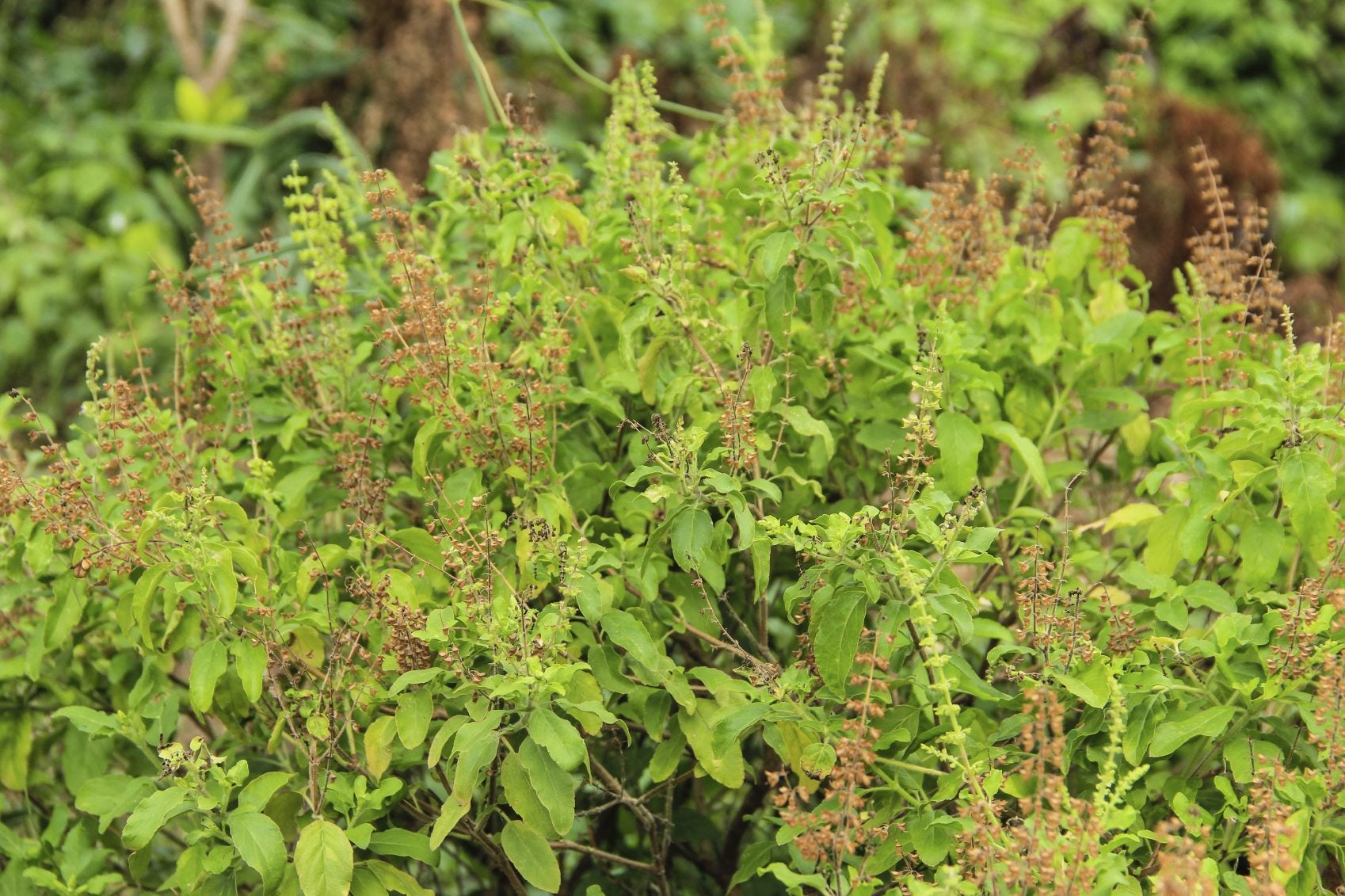Woody Basil Plants: What To Do About A Basil With Woody Stems

Basil is a wonderfully versatile annual herb that is native to southern Asia and the islands of the South Pacific. As with other herbs, basil is easy to grow and with ideal conditions quite prolific. Even so, basil plants can have a number of issues; among these are basil plants with woody stems. If you have basil stems turning into wood, read on to learn about troubleshooting woody stems in basil.
How to Avoid Basil with Woody Stems
Basil, Ocimum basilicum, is a member of the Lamiaceae or mint family. Basil is grown primarily for its tender, young leaves which are used either fresh or dried in Asian and European foods. Proper planting and ongoing care of basil give it the best chance to flourish and avoid disease and pests. Basil, like most herbs, likes lot of sunshine, at least six to eight hours per day. Propagation by seed is simple. You can direct sow into the garden after all danger of frost has passed or start seeds early indoors (six to eight weeks prior to planting outside). Sow the seeds evenly and cover them with ¼-inch (.6 cm.) of well-drained soil with a pH of 6.0-7.5. Within five to seven days, you'll see the seedlings begin to emerge. Keep the seedlings moist but not drenched or they may develop a fungal disease called damping-off. When the seedlings have two or three pairs of leaves, thin them or transplant them 6-12 inches (15-30 cm.) apart. Mulch around the plants with grass clippings, straw, compost or ground leaves to help retain moisture and retard weeds. Water the basil every seven to 10 days, depending upon rainfall. If the plants are in containers, they may need additional water. Lightly fertilize basil with a 5-10-5 food once or twice at the rate of 3 ounces (85 g) for every 10 feet (3 m.) of planting space. Use liquid fertilizer at half the recommended strength every four to six weeks for indoor basil and every three to four weeks for basil that is grown outside in containers. Follow all of the above and you should have an abundance of lovely, aromatic basil leaves to harvest. But what happens if you start getting woody basil plants?
Troubleshooting Woody Stems in Basil
Basil, unlike some plants, actually loves to have a little taken off the top. You can harvest as soon as the plant is a few inches tall. Snip young leaves or, if you are harvesting an entire stem, cut above a pair of leaves. This encourages new growth at the cut which should be visible within a week. Keep trimming the basil throughout the growing season to encourage growth. If you can’t use the basil immediately, hang stems to dry or freeze the basil in ice cube trays for later use. Puree the basil with either a little water or olive oil, put the puree in the tray, freeze, and then pop them out and store the cubes in the freezer in an airtight container for later use. The important thing is to keep pruning your basil. If you don’t, the plant will flower and form seed which, in turn, causes the stems to become woody. The leaves will turn bitter as well. If you're growing the basil as an ornamental for its attractive foliage and flowers, then you probably don’t care if the basil stems are turning into wood. If, however, you love those succulent young leaves, keep snipping. Old stems that have not been cut back also turn woody just as a plant that has been allowed to flower. Do keep in mind that basil is an annual. You can extend its life a bit by bringing the plant inside when the weather begins to get cold, but it will eventually die. Woody basil plants simply mean that the plant is protecting itself from the dipping temps. If you bring it inside, give it plenty of light. Production will slow in the winter, but you should still be able to harvest some delectable fresh basil leaves to enliven your winter meals.
Gardening tips, videos, info and more delivered right to your inbox!
Sign up for the Gardening Know How newsletter today and receive a free copy of our e-book "How to Grow Delicious Tomatoes".

Amy Grant has been gardening for 30 years and writing for 15. A professional chef and caterer, Amy's area of expertise is culinary gardening.
-
 Looking For Plants To Give You The Soft And Fuzzies? Try These 5 Fuzzy Leaf Plant Options
Looking For Plants To Give You The Soft And Fuzzies? Try These 5 Fuzzy Leaf Plant OptionsLovers of texture, drama, silver foliage and tactile plants will adore these special sensory garden additions. These fuzzy leaf plant options will leave you all aglow
By Susan Albert
-
 Get Ready For A Summer Of Hummers! Grow These Full Sun Hummingbird Plants and Flowers
Get Ready For A Summer Of Hummers! Grow These Full Sun Hummingbird Plants and FlowersIf you’re lucky enough to enjoy a sunny backyard, make sure you are maxing out on your pollinator opportunities and grow these full sun hummingbird plants and flowers
By Tonya Barnett